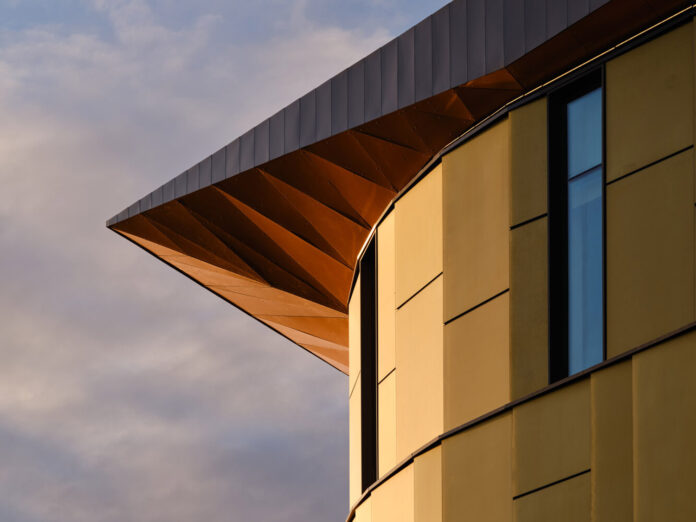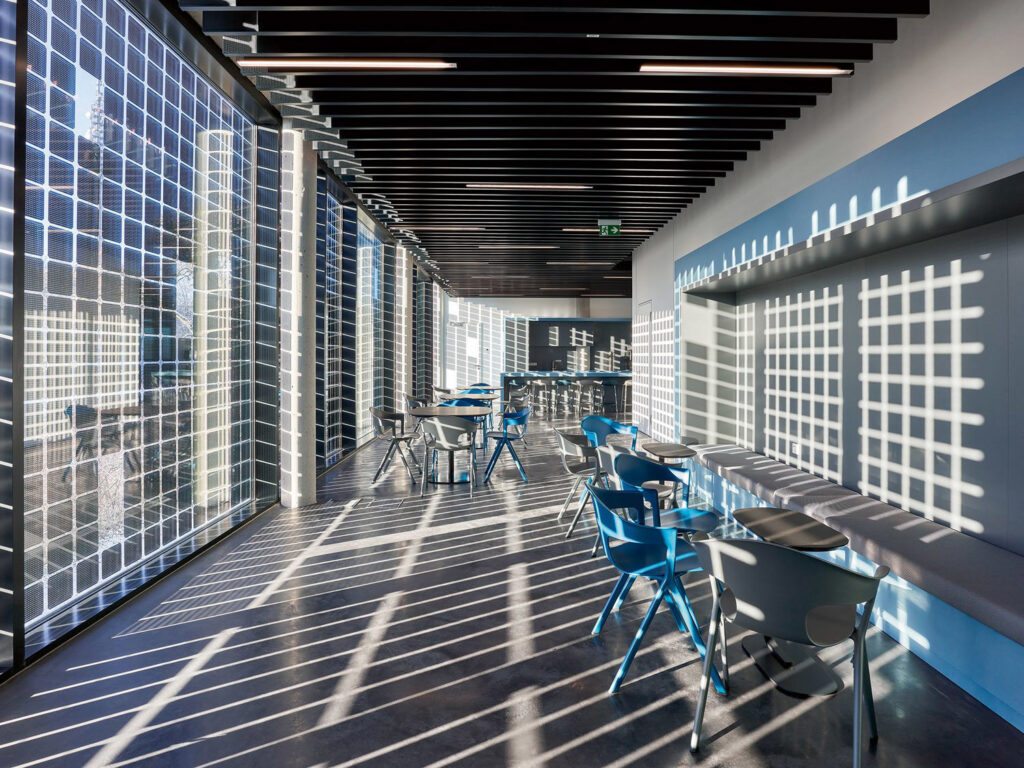Let’s take another look at BIPV solutions and the latest innovations transforming sustainable architecture. Facade Today brings you insights into how recent advancements in Building-Integrated Photovoltaics are reshaping the industry. Transparent solar technologies and perovskite cells are boosting efficiency and design flexibility, while digital workflows streamline design-to-manufacturing processes, cutting costs and minimizing errors. Smart energy management systems optimize power usage, and customizable solar glass panels in a variety of colors and patterns enhance visual appeal. These developments are setting new standards for green building practices, making BIPV systems an increasingly compelling choice for energy-generating facades in modern architecture.
BIPV Uncovered:
Contribution to Energy Independence, One Facade at a Time
BIPV systems have significantly improved in power generation capabilities, with recent advancements allowing for up to 50% of a building’s electricity needs to be met. The energy performance of BIPV is influenced by factors such as form configuration and orientation. These systems can reduce reliance on fossil fuels and decrease carbon emissions.
BIPV’s impact on building energy consumption is substantial. By serving as both building envelope material and power generator, BIPV provides savings in materials and electricity costs. Studies indicate that BIPV could technically cover 32% of building electricity demand at the EU level, with this percentage expected to grow by 2030 as buildings become more energy-efficient and PV systems improve.
Moreover, BIPV systems contribute to nearly Zero Energy Building (nZEB) requirements, promoting energy efficiency and environmental sustainability in construction projects. The integration of BIPV with smart building systems and energy management solutions further optimizes overall building energy performance.
Beyond the Blue:
Chemical Treatments Revolutionizing BIPV Aesthetics
Material innovations in BIPV are revolutionizing the field of sustainable architecture. Advanced solar cell technologies have made significant strides. While conventional solar cells typically have a maximum efficiency of around 20%, PERC (Passivated Emitter and Rear Cell) solar cells can reach efficiencies of up to 23%*. Multi-junction cells using materials like gallium arsenide (GaAs) have pushed efficiencies even further, exceeding 30% in some cases.
Smart glass and coating developments have also transformed BIPV solutions. Anti-reflective coatings are being applied to the front glass of modules to reduce glare, a common issue in facade-integrated PV. These coatings not only improve aesthetics but also enhance energy capture. Innovative approaches include the use of various patterns and textures on glass surfaces, offering architects greater design flexibility.
Colored coatings, achieved through chemical etching, now allow for BIPV modules in a range of hues such as grey, terracotta, and blue. This advancement addresses the aesthetic concerns often associated with traditional blue or black PV panels. Additionally, bifacial cell designs are gaining traction, increasing energy yield by up to 30% compared to traditional panels by capturing light from both sides.
Data-Driven Energy:
How BIPV Communicates with Your Building
Connectivity and monitoring solutions for BIPV systems have advanced significantly. Real-time monitoring through user-friendly apps and dashboards allows building owners and occupants to track energy production and consumption patterns. These systems provide valuable insights into system performance, enabling quick identification of inefficiencies or maintenance needs.
Smart energy management optimizes BIPV performance by intelligently distributing power. Advanced algorithms prioritize energy usage, ensuring that power generated by BIPV panels is used for immediate needs, stored for future use, or redirected to the grid based on real-time data and user preferences. This approach maximizes energy efficiency and reduces reliance on traditional power sources.
Load balancing is another key feature, preventing energy spikes and ensuring a steady power supply throughout the building. For example, during peak sunlight hours, excess energy can be directed to high-consumption areas or stored for later use.
The integration of BIPV with smart building systems also contributes to greater energy independence. By utilizing stored solar energy during outages or peak pricing periods, buildings can maintain operations and reduce costs. As AI and machine learning technologies continue to evolve, the potential for even more sophisticated energy management in BIPV systems grows. Future developments may include predictive maintenance features and seamless integration with emerging smart city technologies, further enhancing the role of BIPV in sustainable urban development.

Mastering BIPV Facade Integration
Future Trends From Cold to Warm
BIPV systems can be integrated into both cold and warm facade applications, each with unique considerations. Cold facades, or ventilated facades, feature an air gap between the PV panels and the building’s insulation layer, allowing for better cooling and potentially higher efficiency. Warm facades integrate PV panels directly into the building’s thermal envelope, which can be more challenging but offers a sleeker appearance.
On the other hand, retrofitting existing buildings with BIPV presents several challenges. These include structural limitations of the existing facade, potential disruption to occupants, and regulatory hurdles such as building codes and zoning laws. To address these issues, lightweight BIPV solutions and modular systems have been developed, allowing for easier installation and minimal structural modifications.
Emerging technologies in BIPV facades are revolutionizing sustainable architecture. Third-generation solar cells, including dye-sensitized (DSSC) and perovskite solar cells (PSC), promise higher efficiencies and greater design flexibility. Luminescent solar concentrators (LSC) are gaining traction, particularly in window applications. Smart glass innovations are enhancing both aesthetics and performance, with anti-reflective coatings and color customization options becoming more sophisticated.
= = =
* Percentage of the sunlight they receive, converted into usable electricity.
Case studies
The Meyer-Petermann apartment building, Bouchs, Switzerland
Architects: Heller Architekten
The Meyer-Petermann apartment building in Bouchs, Switzerland, designed by Heller Architekten, showcases advanced BIPV, merging aesthetics with energy efficiency. The fully integrated solar facade and rooftop system generate on-site renewable energy, reducing reliance on external power sources.
Engineering specifications include high-efficiency monocrystalline BIPV panels seamlessly integrated into the facade, providing both insulation and electricity generation. The system boasts a peak power output of 45 kWp, covering over 60% of the building’s annual energy demand. Energy storage solutions further enhance self-sufficiency, ensuring optimal usage of solar energy.
This integration results in up to 40% reduction in operational carbon emissions, while the building meets Switzerland’s Minergie-A standard for energy efficiency. By leveraging BIPV, the project exemplifies how architectural design and renewable energy can harmonize, setting a precedent for future sustainable housing developments.
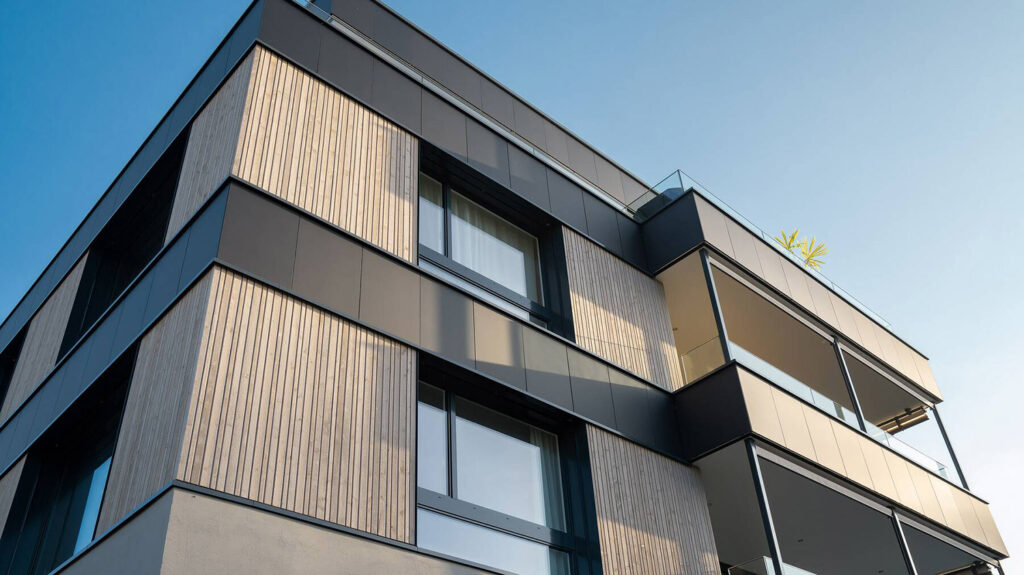
Office building Drees & Sommer, Stuttgart
Architects: SCD Architekten Ingenieure
Facade fabricator: FKN and Evonik
Schüco Engineering
The Drees & Sommer office building in Stuttgart, designed by SCD Architekten Ingenieure, exemplifies cutting-edge sustainability through the integration of BIPV. The facade incorporates high-efficiency monocrystalline photovoltaic panels, seamlessly blending aesthetics with energy generation. Covering approximately 1,200 m², the BIPV system contributes to the building’s nearly net-zero energy status.
With a peak capacity of 180 kWp, the system generates around 170,000 kWh annually, reducing CO₂ emissions by an estimated 80 tonnes per year. The triple-glazed PV modules provide both thermal insulation and solar shading, improving indoor comfort and reducing HVAC energy demand by 30%.
A smart energy management system optimizes self-consumption, storing excess energy for later use. The BIPV facade, combined with high-efficiency LED lighting and geothermal heating, makes the Drees & Sommer building a benchmark in sustainable office design, significantly lowering operational costs while maximizing renewable energy use.
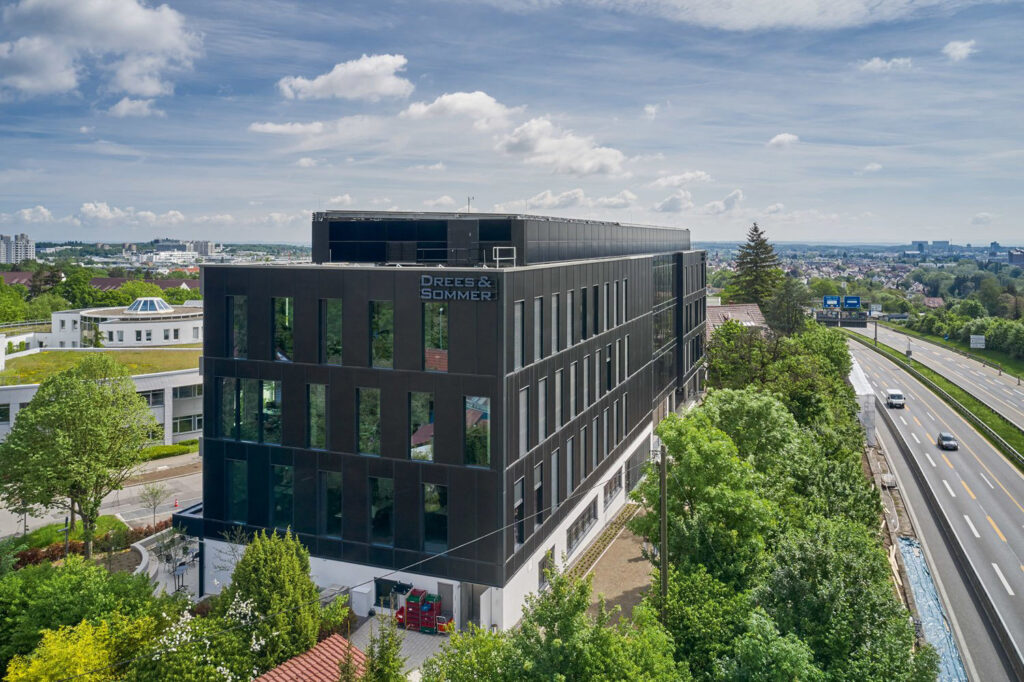
Red River College Polytechnic’s Manitou a bi Bii dazigae, Winnipeg, Canada
Architects: Diamond Schmitt Architects in a joint venture with Number TEN Architectural Group
Facade: SolarLab
The Manitou a bi Bii dazigae building at Red River College Polytechnic in Winnipeg showcases an innovative approach to BIPV, seamlessly blending renewable energy generation with modern architectural design. Designed by Diamond Schmitt Architects in partnership with Number TEN Architectural Group, its facade features custom solar glass panels by SolarLab, seamlessly merging sustainability with aesthetics.
The BIPV system comprises over 400 photovoltaic panels integrated into the curtain wall, generating approximately 200 MWh of electricity annually. This offsets a significant portion of the building’s energy demand, reducing reliance on the grid and lowering CO₂ emissions by an estimated 60 tonnes per year.
The high-efficiency panels feature monocrystalline silicon cells embedded in laminated safety glass, providing both solar energy capture and daylight optimization. Additionally, advanced thermal insulation properties enhance indoor climate control, contributing to LEED Gold certification. This integration demonstrates how BIPV can enhance architectural design while advancing energy efficiency in cold climates.
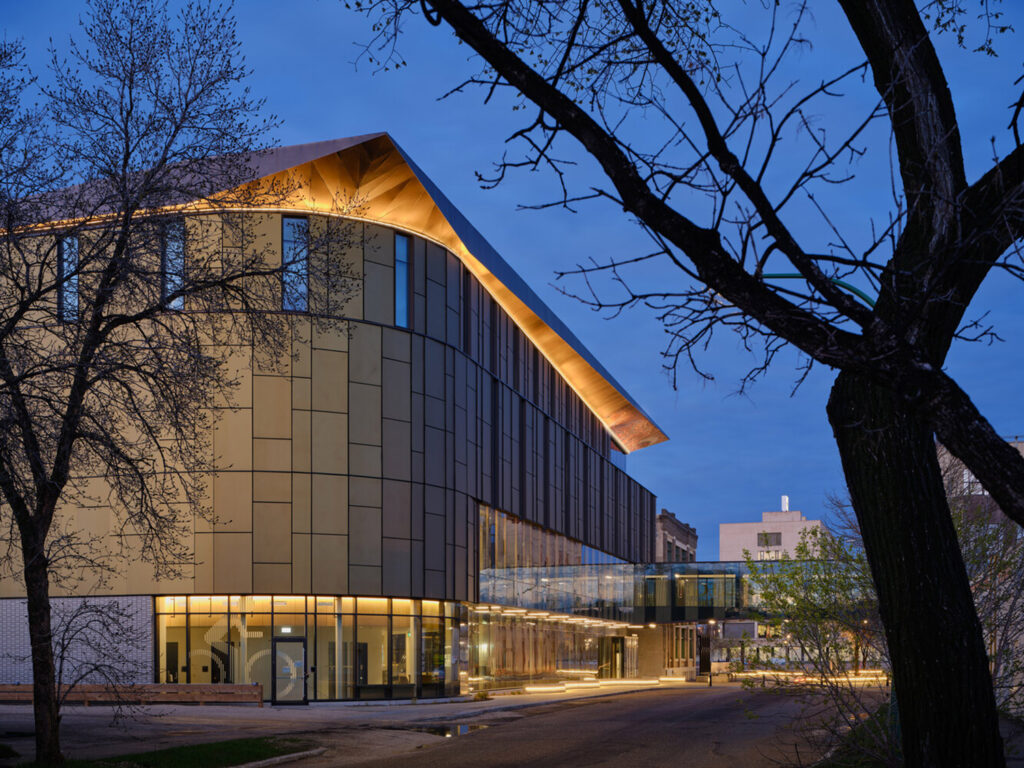
As the Editor of FacadeToday.com, I merge my passion for Design, Architecture and Technologies with three decade of experience collaborating with entrepreneurs across many industries. My career has centered on fostering innovation, scaling business opportunities, and bridging gaps between technical experts, business developers, and creative visionaries. I thrive at the intersection of sustainable solutions, material advancements, and smart technologies, curating insights on themes like energy-efficient facades, smart tech, and advanced manufacturing. With a commitment to lifelong learning, I aim to empower architects and facade engineers by translating innovations into actionable knowledge, driving the industry forward through purposeful connectivity and cutting-edge practices.


